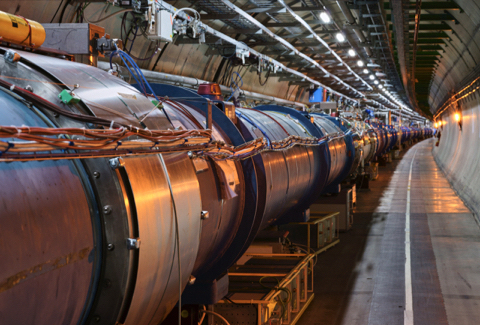
Our research at CIAFF focuses on:
Beyond-SM in the Large Hadron Collider (LHC)
ATLAS and CMS are two (out of four) experiments/detectors/collaborations that collect the results of particle collisions in the LHC. CIAFF members participate actively in these collaborations in the data analysis, triggering system, the development of the ATLAS liquid argon electromagnetic calorimeter and the CMS muon drift tubes. Additionally, a Tier-2 computing facility belonging to the Worldwide LHC Computing Grid, operated by CIAFF members, supports simulation and end-user processing of data.
Beyond-SM with neutrinos
Neutrinos are produced in a given "flavor" (electron, muon or tau) that does not correspond to a given "mass"-eigenstate. This fact is at the origin of the neutrino oscillations. CIAFF members are involved in experiments like Super-Kamiokande and NEXT that are aimed at detecting and studying the properties of the neutrinos, and search for potential proton decay and neutrinoless double-beta decay.
Direct detection of Dark Matter
The last line of research within the Experimental Particle Physics area is related to the direct search for Dark Matter. In particular, the experimental proof of the atomic Migdal effect, of importance for the detection of Dark Matter at scales below 1 GeV. If dark matter has a mass below 1 GeV, the main way of detection is through its interaction with an atomic nucleus which ionises the atom of a certain gas in a chamber, producing an electron that can be observed and a recoiled nucleus (Migdal effect). The CIAFF group has built a light detector to be included in the MIGDAL experiment located at the Rutherford Appleton Laboratory (RAL) in the UK. This detector will be used as the main trigger for the experiment. This is a clear multidisciplinary experimental task carried out by members of CIAFF-UAM with different specializations (Experimental Particle Physics, Microelectronics, Engineering). This research has been funded by Comunidad de Madrid and Plan de Recuperacion, Transformacion y Resiliencia of European Union NextGeneration.

